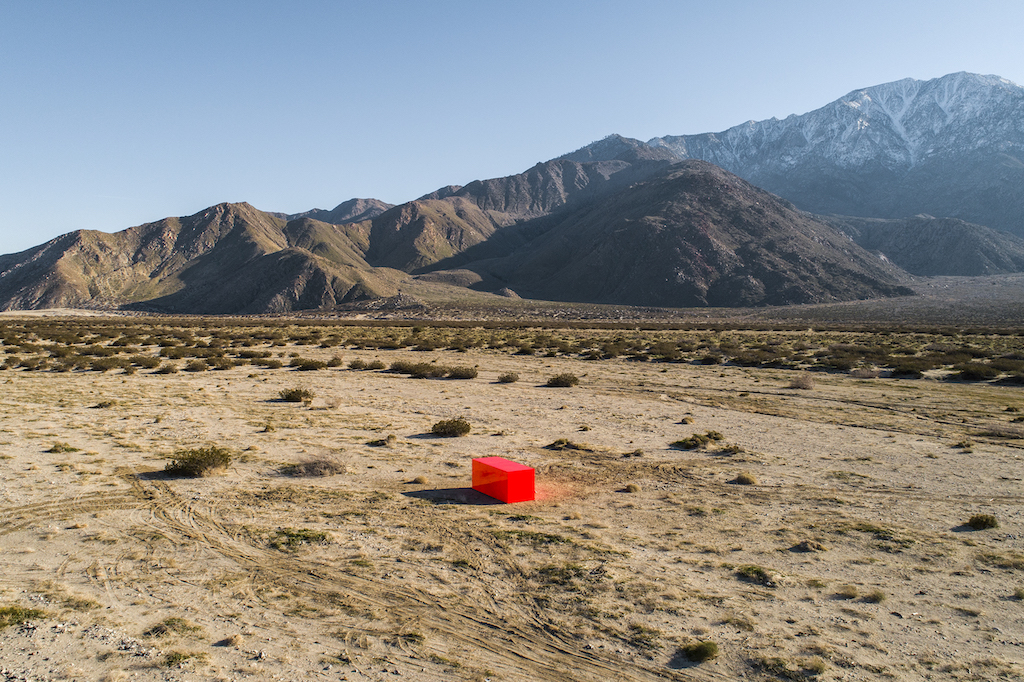[ad_1]
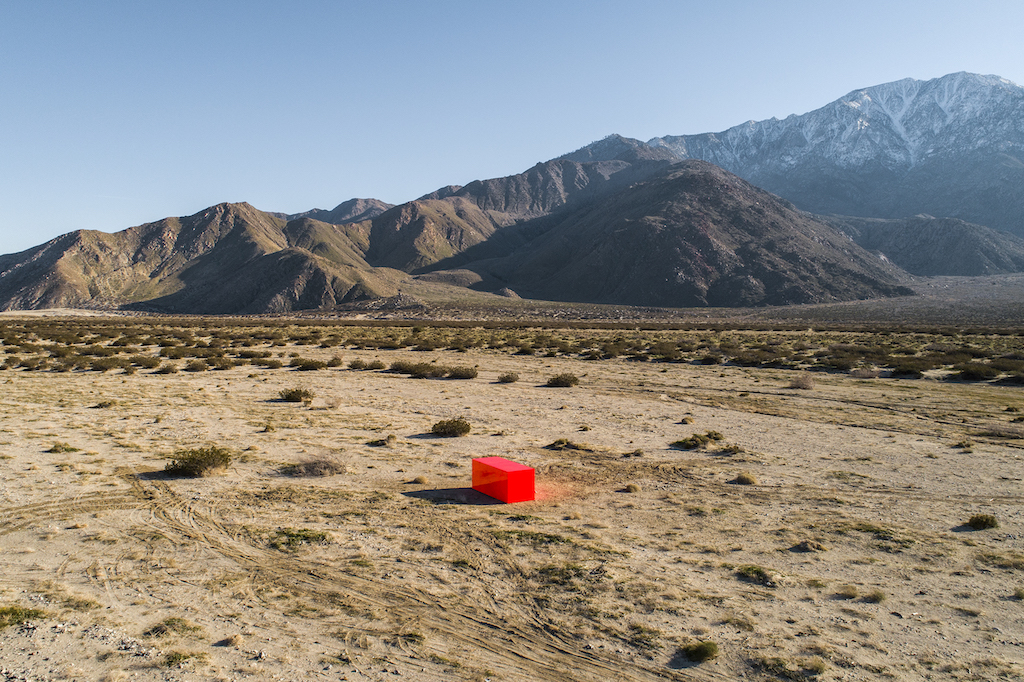
Sterling Ruby, Specter, 2019.
LANCE GERBER
‘It’s brutal,” co-curator Amanda Hunt said of the arid environment of Desert X, the mostly outdoor biennial that opened this weekend in California’s Coachella Valley. The artists in the show running into April had to consider the effects of prolonged exposure to intense sun, extreme changes in temperature, and sands stirred by violent winds. The wellbeing of bighorn sheep, however, was an issue that took Jenny Holzer by surprise. The artist’s new illuminated work of scrolling poetry, BEFORE I BECAME AFRAID, was meant to project on the mountainside of a wildlife preserve. But due to the erratic behavior of pneumonia-stricken local sheep, it was in the animals’ best interest to minimize potential contact with humans. “We decided that shouldn’t be shown there,” Desert X artistic director Neville Wakefield explained during the biennial’s preview. “But we are making plans for it to appear later.”
For the 18 other artists on an international roster that includes Gary Simmons, Pia Camil, and Iván Argote, the show goes on. As in the inaugural 2017 edition of Desert X, the task was to create works in dialogue with the Coachella Valley, an arid region to the east of Los Angeles where the vacant real estate of architectural ruins and empty plots of land make excellent sites for installation. The exhibition is free and open to anyone with a car, a map, and GPS, and the second edition of Desert X goes farther afield than the last, both geographically and curatorially. Its eastern edge has moved to the Salton Sea, with a handful of works installed across the border into Mexico. And the curators—Wakefield plus independent curator Matthew Schum and Hunt, who is the director of education and programming at the Museum of Contemporary Art, Los Angeles—emphasized themes of climate change, migration, and indigenous legacies. The purview is a seeming reversal of Wakefield’s sentiments expressed during the first Desert X, in which he cited Manifest Destiny as a source of inspiration. And despite his previous derision of being seen as a “quota curator” when asked about the shortage of women in the last edition, this year the representation of female artists has gone up, from 25 percent to 50 percent.
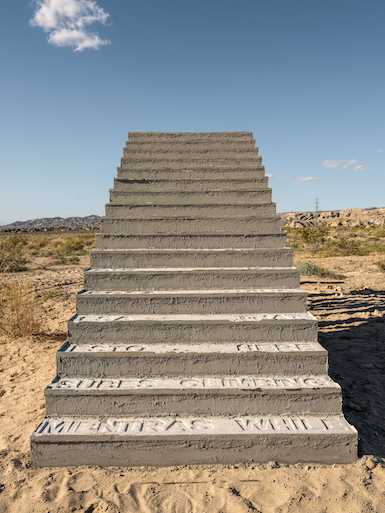
Iván Argote, A Point of View, 2019.
LANCE GERBER
The roughly 60 miles between the two farthest edges of the biennial—Sterling Ruby’s Specter to the west and Steve Badgett and Chris Taylor’s Terminal Lake Exploration Platform to the east—represent the surprising diversity of modern-day desert ecologies: mountains and plains; neat rows of date farms and cookie-cutter strip malls; and freeways flanked by the sky-high signs of gas stations and In-N-Outs. The diversity within the landscape prompted a range of responses from the artists. Playing with the space that the desert affords, large-scale works address the land, such as Argote’s A Point of View, a set of concrete steps referencing pre-Columbian architecture that offers visitors words of affirmation (“WE ARE NOT ALONE,” it reads in both English and Spanish) and a vantage point to the Salton Sea. There’s also John Gerrard’s Western Flag, a digital rendering of black smoke billowing from a flagpole in an oil field in Texas. The work is contextualized as an appeal to consider the havoc we wreak on the environment, but to watch a giant electronic screen that has been airlifted into the desert seems neither appealing nor environmentally sensitive in the hot light of day.
The subtext of decline and disappearance is a constant. Cara Romero and the Danish collective Superflex ruminate on who and what existed on these lands previously. In Romero’s case, that means entire nations—as engaged in her Jackrabbit, Cottontail & Spirits, a project for billboards along the Gene Autry Trail. Her images depict young boys dressed as time travelers from the Chemeheuvi tribe wandering the modern amenities that now occupy their ancestral lands, like wind farms and a rusted pick-up truck. The coral texture of Superflex’s Palm Springs-pink monument Dive-In nods to the region’s history as an ocean bed millions of years ago. There are also quieter interventions whose implications play out on a smaller scale. Cinthia Marcelle’s Wormhole speaks of economic decline in abandoned storefronts across the valley and into Tijuana. In empty shop windows, old-fashioned TV sets play footage from of other storefronts, touching on themes of migration by creating portals between borders.
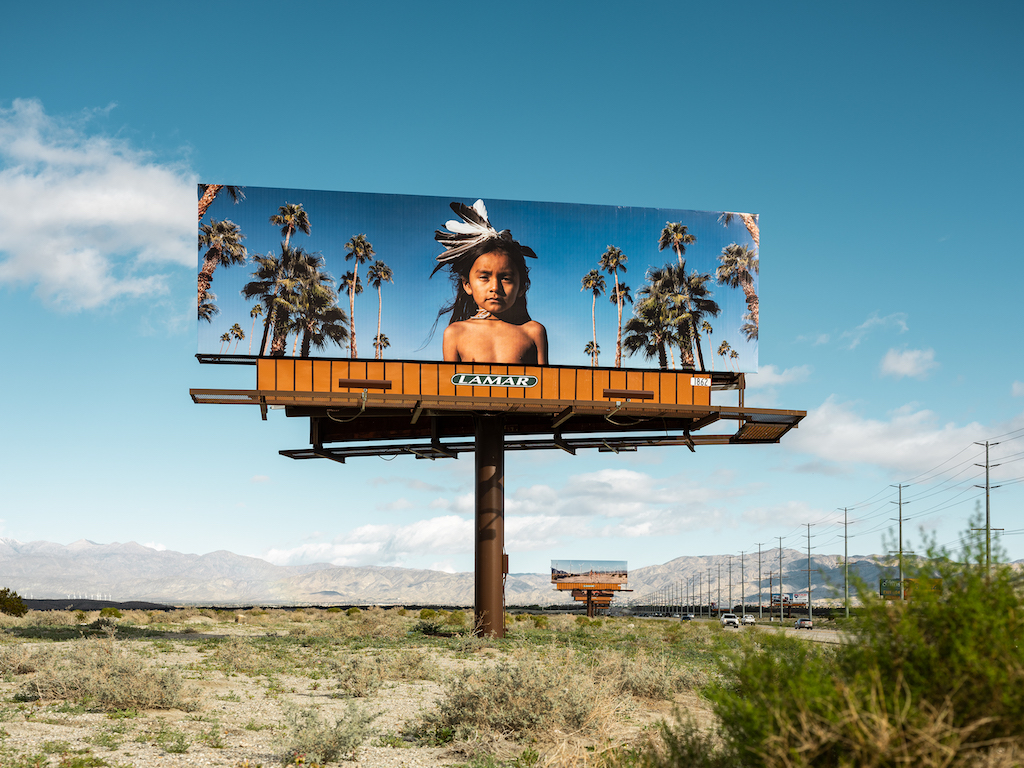
Cara Romero, Jackrabbit, Cottontail & Spirits, 2019.
LANCE GERBER
The best work in the biennial is Ruby’s Specter, an ultra-saturated orange block that sits on the foot of the mountains leading into Palm Springs. Instagram is already full of close-range photos that do the work no justice by framing it as a sculptural object. In person, it’s more of a painterly intervention that from the highway reads in only two dimensions. The bright square that grates against the jagged textures of its surroundings also works as a point of reference, lending itself as a focal point that emphasizes the profound beauty of the landscape.
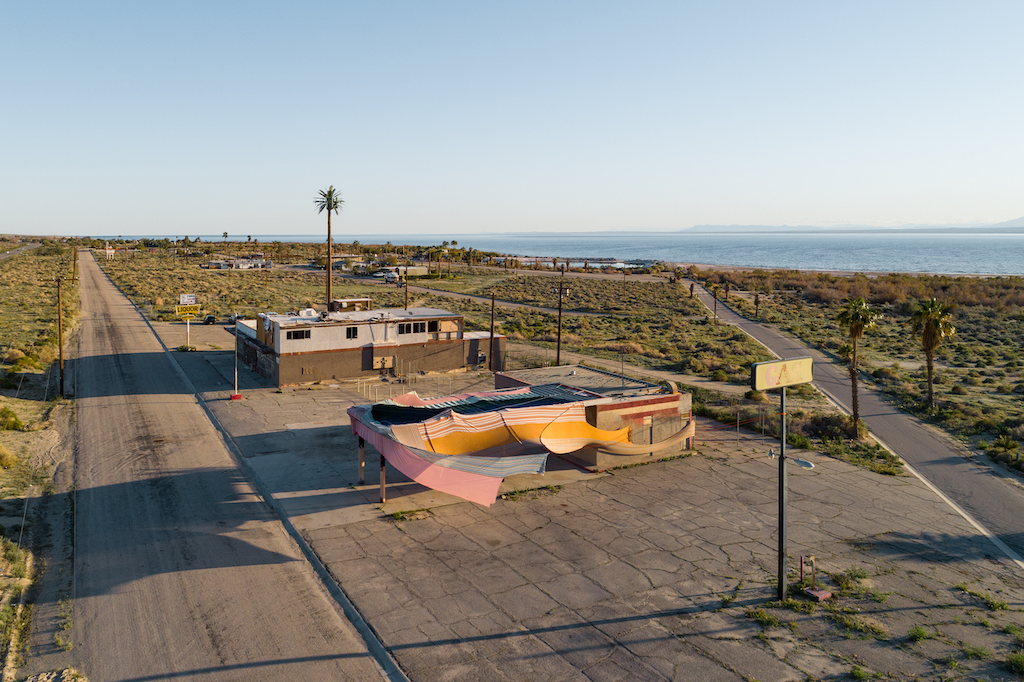
Eric N. Mack, Halter, 2019.
LANCE GERBER
There’s a limit to how long one can wander Desert X before the elements take their toll. Unprepared visitors are often prone to dehydration and sunburn; even Ruby’s highlight work wears a UV-resistant coating to preserve its color and luster for the coming months. Eric N. Mack, however, has welcomed the inevitable degradation of his work in the show. Stationed where the rising toxicity levels of the Salton Sea have made ghost towns of surrounding communities, Mack’s Halter is sited at the husk of a former gas station with boarded windows and peeling paint. The artist dressed the building’s canopy in a patchwork of luxury textiles gifted from the fashion brand Missoni, stringing them up to a pole that supports a faded sign with the faded letters G-A-S. Slack in the cords evokes the shape of a Bedouin tent, and the various stripes and opacities of fabric flutter in the constant breeze. Over time, the patterns will fade and the winds will inevitably rip them to shreds, adding his work to a long list of desert casualties that the elements outlive.
[ad_2]
Source link

